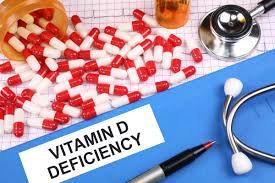
76% of India’s population suffers from Vitamin D deficiency: Data
Nearly 76% of the Indian population suffers from vitamin D deficiency; a survey carried out by Tata 1mg Labs recently revealed.
The company said that survey came out from tests of more than 2.2 lakh people across 27 cities in India.
“While 79% of men overall were found with lower-than-desirable levels of vitamin D in their bodies, for women, the figure was 75%,” the data found.
“Vadodara (89%) and Surat (88%) were found to have the highest and Delhi-NCR the lowest (72%) incidence of vitamin D deficiency among all the cities from where the data was collected,” the data further found.
Interestingly, younger people were found to be much more affected with Vitamin D deficiency compared to the national average, an analysis of Tata 1mg data found. Its prevalence was highest in age group of below 25 years (84%), followed by 25–40 years (81%).
Known as the sunshine vitamin, vitamin D is essential to the growth, development, metabolism, immunity, bone health, and mental health of people. Its deficiency has been linked to health disorders such as prostate cancer, depression, diabetes, rheumatoid arthritis, and rickets.
Dr Rajeev Sharma, VP, Medical Affairs, Tata 1mg, said, “Changing food habits and an indoor lifestyle with inadequate exposure to sunlight have led to a drastic increase in cases of vitamin D deficiency. The much higher prevalence in young adults can also be attributed to lower consumption of vitamin D-containing foods like fortified cereals and oily fish. However, seasonal variations in exposure to sunlight can also be a likely explanation, especially during winters. Unspaced and unplanned pregnancies in women with dietary deficits can lead to worsening of vitamin D status in both mother and child.”
Dr Prashant Nag, Clinical Head, Tata 1mg Labs: “Vitamin D levels should be checked regularly in cases of obesity, mal-absorption syndrome or softening of the bones (osteomalacia), or if the patient is getting treatment for TB. Vitamin D levels can also be checked along with regular full-body checkups, which are recommended to be done every six months or at least once a year. Infants and children under the age of five, pregnant and breastfeeding women, teenagers and young women, people over the age of 65, and those with limited sun exposure are the most vulnerable to Vitamin D deficiency.”
The human skin hosts a type of cholesterol that functions as a precursor to vitamin D. When exposed to UV-B radiation from the sun, it turns into vitamin D. Having enough exposure to sunlight and consuming foods rich in vitamin D such as egg yolks, oily fish, red meat, and fortified foods can help prevent the deficiency.